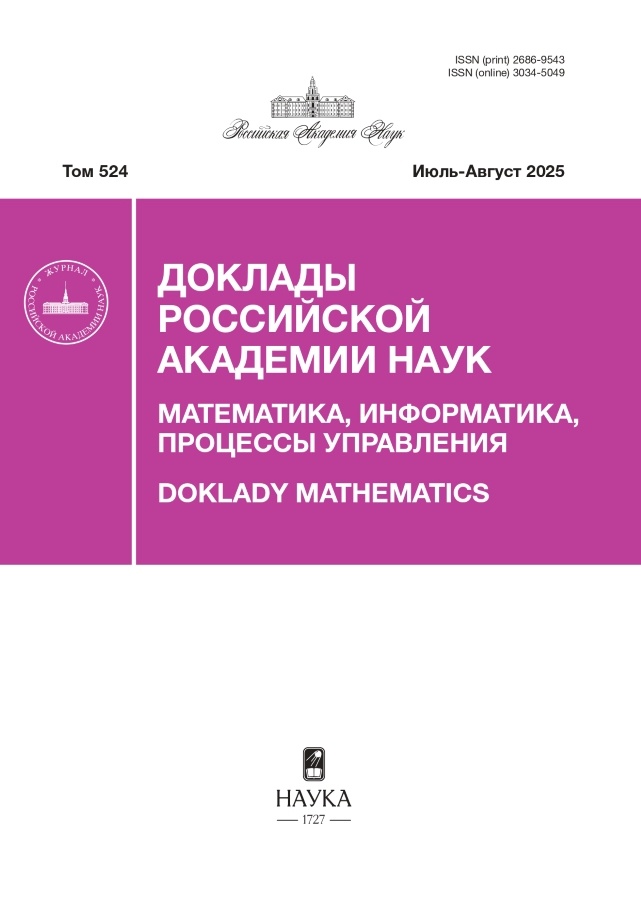Двумерные самозаклинивающиеся структуры в трехмерном пространстве
- Авторы: Мантуров В.О.1,2,3, Канель-Белов А.Я.1,4,5, Ким С.6, Нилов Ф.К.1,7
-
Учреждения:
- Московский физико-технический институт
- Казанский федеральный университет
- Северо-Восточный университет
- Университет им. Бар-Илана
- Магнитогорский государственный технический университет им. Г.И. Носова
- Цзилиньский университет
- Московский государственный университет им. М.В. Ломоносова
- Выпуск: Том 515 (2024)
- Страницы: 92-99
- Раздел: МАТЕМАТИКА
- URL: https://modernonco.orscience.ru/2686-9543/article/view/647954
- DOI: https://doi.org/10.31857/S2686954324010144
- EDN: https://elibrary.ru/ZTAZZI
- ID: 647954
Цитировать
Полный текст
Аннотация
Известно, что если на плоскости имеется конечный набор выпуклых фигур, внутренности которых не пересекаются, то среди этих фигур имеется хотя бы одна крайняя – такая, которую можно непрерывно передвинуть “на бесконечность” (за пределы большого круга, содержащего остальные фигуры), оставляя все остальные фигуры неподвижными и не пересекая их внутренности в процессе движения.
Было обнаружено, что в пространстве размерности три имеет место феномен самозаклинивающихся структур. Самозаклинивающаяся структура – это такой конечный (или бесконечный) набор выпуклых тел с непересекающимися внутренностями, что если зафиксировать все, кроме любого одного, то это тело нельзя “унести на бесконечность”.
С давних пор имеющиеся структуры базируются на рассмотрении слоев из кубов, тетраэдров и октаэдров, а также их вариаций.
В данной работе мы рассматриваем принципиально новый феномен двумерных самозаклинивающихся структур: набор двумерных многоугольников в трехмерном пространстве, где каждую многоугольную плитку нельзя унести на бесконечность. Из тонких плиток собираются самозаклиненные декаэдры, из которых, в свою очередь, собираются структуры второго порядка. В частности, приводится конструкция колонны, составленной из декаэдров, устойчивой при фиксации двух крайних декаэдров, а не всей границы слоя, как в структурах, исследованных ранее.
Ключевые слова
Полный текст
Об авторах
В. О. Мантуров
Московский физико-технический институт; Казанский федеральный университет; Северо-Восточный университет
Автор, ответственный за переписку.
Email: vomanturov@yandex.ru
Россия, Москва; Казань; Шэньян, Китай
А. Я. Канель-Белов
Московский физико-технический институт; Университет им. Бар-Илана; Магнитогорский государственный технический университет им. Г.И. Носова
Email: kanelster@gmail.com
Россия, Москва; Рамат-Ган, Израиль; Магнитогорск
С. Ким
Цзилиньский университет
Email: kimseongjeong@jlu.edu.cn
Китай, Чанчунь
Ф. К. Нилов
Московский физико-технический институт; Московский государственный университет им. М.В. Ломоносова
Email: nilovfk@gmail.com
Россия, Москва; Москва
Список литературы
- Kanel-Belov A.J., Dyski A.V., Estrin Y., Pasternak E., Ivanov I.A. Interlocking of convex polyhedra: towards a geometric theory of fragmented solids. Moscow Mathematical Journal, 2010. arXiv:0812.5089v1.
- Канель-Белов А.Я. Самозаклинивающиеся структуры // Квант. Физико-математический журнал для школьников и студентов. Январь–февраль 2009. Т. 1. С. 20–23.
- Djumas L., Simon G.P., Estrin Y. et al. Deformation mechanics of non-planar topologically interlocked assemblies with structural hierarchy and varying geometry // Nature. Sci Rep 7. 2017. P. 11844. https://doi.org/10.1038/s41598-017-12147-3
- Khandelwal S., Siegmund T., Cipra R.J., Bolton J.S. Transverse Loading of Cellular Topologically Interlocked Materials // Int. J. Solids Struct. 2012. Vol. 49. No. 18. P. 2394–2403.
- Khandelwal S., Cipra R.J., Bolton J.S., Siegmund T. Adaptive Mechanical Properties of Topologically Interlocking Material Systems // Smart Mater. Struct. 2015. Vol. 24. No. 4. P. 045037.
- Feng Y., Siegmund T., Habtour E., Riddick J. Impact mechanics of topologically interlocked material assemblies // Intl. J. Impact Eng. 2015. Vol. 75. P. 140–149.
- Siegmund T., Barthelat F., Cipra R.J., Habtour E., Riddick J. Manufacture and Mechanics of Topologically Interlocked Material Assemblies // Applied Mechanics Reviews. 2016. Vol. 68.No. 4. P. 041401–1.
- Mather A., Cipra R.J., Siegmund T. Structural Integrity During Remanufacture of a Topologically Interlocked Material // Int. J. Struct. Integr. 2012. Vol. 3. No. 1. P. 61–78.
- Bayer J., Benzmúller C., Buzzard K., David M., Lamport L., Matiyasevich Y., Paulson L., Schleicher D., Stock B., Zelmanov E. Mathematical proof between generations. arXiv:2207.04779.
Дополнительные файлы


















